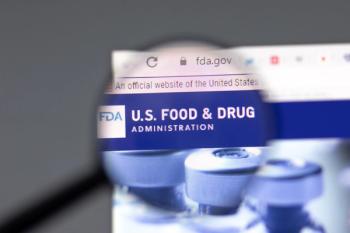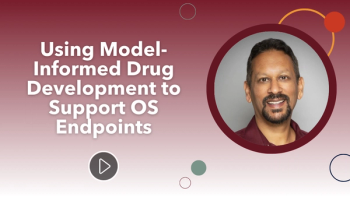
REMs: Battling the Unknowns
Why knowing a drug's risk and preparing for a risk evaluation mitigation strategy early on will considerably benefit a drug's development.
With risk evaluation mitigation strategies (REMs) becoming required at an increasing rate by the FDA, companies are having to utilize their resources to conduct extra safety steps that had previously never been a part of their workflow.
Since the inception of the Food and Drug Administration Amendments Act of 2007, which granted the FDA authority to require a REMs, there have been
Drug development as a whole is seeing changes and risk-safety measures are being used much more commonly as time goes on. Keeping a sharp eye on a drug’s risk to better foresee such requirements in a drug’s future is a wise measure to take.
Companies should be “anticipating risk through Phase I-III and if there is a REMs necessary, what is it going to look like?” proposed Vikram Dev, a speaker at CBI’s registries and post-approval conference this past September and the vice president of drug safety for AstraZeneca. At “every touch point you should be building on knowledge and including the potential of a risk plan,” he added.
It should be no secret to a clinical trial team, once a drug reaches the end of Phase II, whether the drug is signaling a potential risk when used in a larger patient population. With this vital information a company can make the executive decision to begin the REMs process earlier in order to avoid a surprise REMs requirement when the trial is at its end.
Different faces of REMs
Knowing that a drug will likely require a REMs may be more obvious for a project management team when looking at clinical data than will understanding the actual type of REMs that is necessary.
When submitting to the FDA, a REMs must include a proposed REMs, describing its proposed goals and elements, which if approved will be the basis for enforcement—a template for a proposed REMs can be found
The second portion involves the supporting REMs document that requires an expansion on the information presented in the proposed REMs as well as additional information that explains the reasoning for the proposed REMs and supporting information about its content, which can include one or more of the following:
Medication Guide/Patient Package Insert. The FDA will require this if a drug’s labeling could prevent an adverse event, could help a patient decide against using the drug completely to avoid adverse risk, and if the patient adhering to the label is vital to the drug’s effectiveness.
Communication Plan. This supportive document, intended to be a part of the implementation plan, is guided toward the health care providers, and can include letters to health care providers, distributing information about REMS elements to encourage its implementation by providers or to inform about safety protocols, and notifying providers through professional societies about any serious risks of the drug and any protocol to assure safe use.
Elements to Assure Safe Use (ETASU). A requirement for this will arise if a drug is known to be associated with a serious adverse event. Any of the following could fall under an ETASU: training materials, specified procedures, patient/physician agreements or other informed consent, patient educational materials, safety protocols, medical monitoring procedures, and data collection forms.
Implementation System. Only if a company is directed to provide parts B) Pharmacies, practitioners, or health care settings that dispense the drug are specially certified; C) The drug be dispensed to patients only in certain health care settings, such as hospitals; and D) The drug be dispensed only to patients with evidence or other documentation of safe-use conditions, such as laboratory test results of an ETASU, will an implementation system be necessary.
Timetable submission for assessment. REMs for an NDA or BLA must include a timetable, while one for an ANDA does not have to and should reflect when the assessment will be submitted to the FDA not when it will be performed. The minimum timetable of assessments is at 18 months, three years, and seven years after the REMS is initially approved. There may be reasons for the FDA to require more frequent assessments and the minimum may be fulfilled by assessments submitted at earlier dates.
Since there are several different levels in which a REMs can be implemented, and it depends on the type of drug as well as the severity of risk that a drug exposes patients to, the time and cost associated with execution will vary.
Cost concerns
“We’re having difficult experiences with senior management because they have to build in this cost. Simply, it all depends on the drug and what risk the drugs have,” explained Dev.
All of the drugs that have submitted a REMs [2] have at least needed to prepare a medication guide and only eleven of those also had to include a communication plan. Six of the 56, however, were required to submit more in depth REMs plans. Of the six drugs that required submission of an ETASU, two are opioids, two are for the treatment of immune idiopathic thrombocytopenic purpura, one is for pulmonary arterial hypertension, and one is an enzyme replacement.
“We’ve been successful going to commercial folks and using their money for education. Partnering with marketing and sales people is where we’ve been able to find the money,” Jill Robinson shared of her experience at Wyeth, where she is the vice president of global safety surveillance and epidemiology. She was also a presenter at CBI’s conference.
“If you think of it at the end of Phase II you can start implementing tools then instead of conducting post marketing studies at the end and having those costs,” she added.
Forging ahead
There may be influences within the project management team or from company executives against moving forward with such risk strategies because of the fear that money will be wasted on these efforts if the FDA does not enforce it.
But, “in some companies you can take the view that REMs could turn into a competitive advantage. You can position REMs as a positive rather than a negative,” encouraged Dev. There’s an “opportunity to develop a much deeper reliability and be at the front line of how to use a drug as safely as possible.”
Beyond building a drug’s dependability, looking at a drug from the perspective that a REMs will require you to allows for the opportunity to decide on a drugs potential success earlier. If your drug looks like it’s heading toward needing an ETASU and there are already other drug’s available that present the same associated risks, it may not be worth moving forward with that trial.
*See the full draft guidance from the FDA
Newsletter
Stay current in clinical research with Applied Clinical Trials, providing expert insights, regulatory updates, and practical strategies for successful clinical trial design and execution.






.png)



.png)



.png)
.png)
